Mask force: London's five centuries of face coverings
- Published

In the 1930s, as now, not everyone believed in the benefits of covering both the mouth and nose
Once limited to bank robbers, eccentric pop stars and health-conscious (and conscientious) Japanese tourists, the wearing of face masks in public is now common enough to be dubbed "the new normal".
Normal it might be - but it's not new.
From the Black Death to the suffocating smog, traffic pollution to the threat of gas attacks, face coverings have been worn by Londoners for the past 500-odd years.
Although the very earliest masks were used to disguise, donning a protective (rather than costume) mask dates back to at least the 6th Century BC. Images of people wearing cloth over their mouths were found on the doors of Persian tombs.
According to Marco Polo, servants in 13th Century China covered their faces with woven scarves. The idea was that the emperor did not want their breath affecting the smell and taste of his food.
Charming.
Smog

It may look like an ocean liner foundering at sea, but these are factory chimneys poking through the smog in the East End in 1952
The Industrial Revolution of the 18th Century helped create the infamous London smog, which escalated as more and more factories belched out smoke and households kept their coal fires burning.
Many winters saw thick blankets of greyish-yellow smog cloak the capital.
The worst episode was in 1952, when between 5 and 9 December at least 4,000 people died in the immediate aftermath, and it's estimated a further 8,000 died in the following weeks and months.

What is smog?
As the name suggests, it's combination of smoke and fog. It occurs when cold weather traps stagnant air under a layer of warm air.
Low temperatures also lead people to burn more coal, creating smoke.
When there is not enough wind to blow that smoke away, it combines with tarry particles of soot giving the smog its yellow-black "pea soup" colour.
Smog can aggravate respiratory and cardiovascular problems and cause eye irritation.

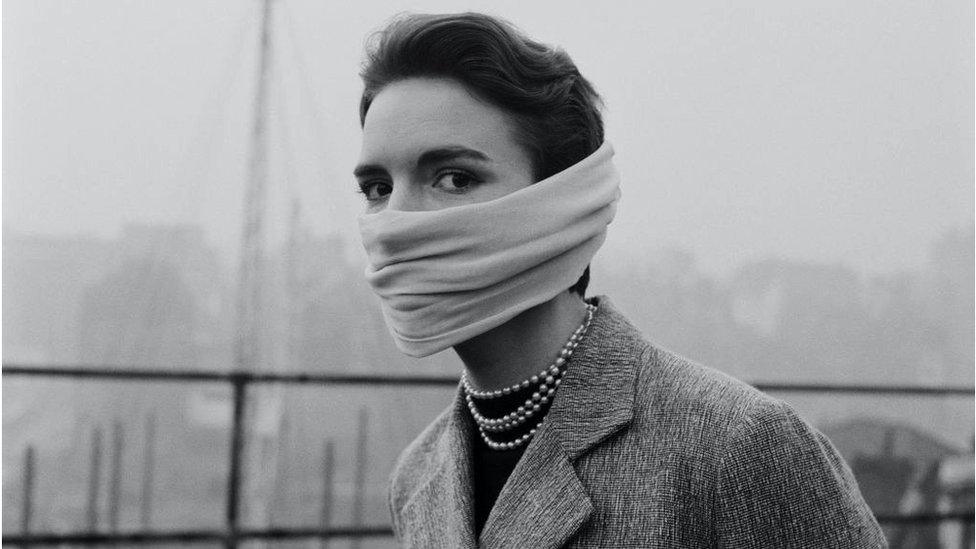
A facemask and pearls were appropriate 1950s smogwear
Another 1,000 or so people died from smog in December 1957, and another episode in 1962 resulted in 750 deaths.
The smog was so thick that trains could not run, and there were even reports of cattle choking to death as they stood in the fields.
In the 1930s, "anti-smog" masks became as de rigueur upon the face as the Homburg or felt cloche upon the head.
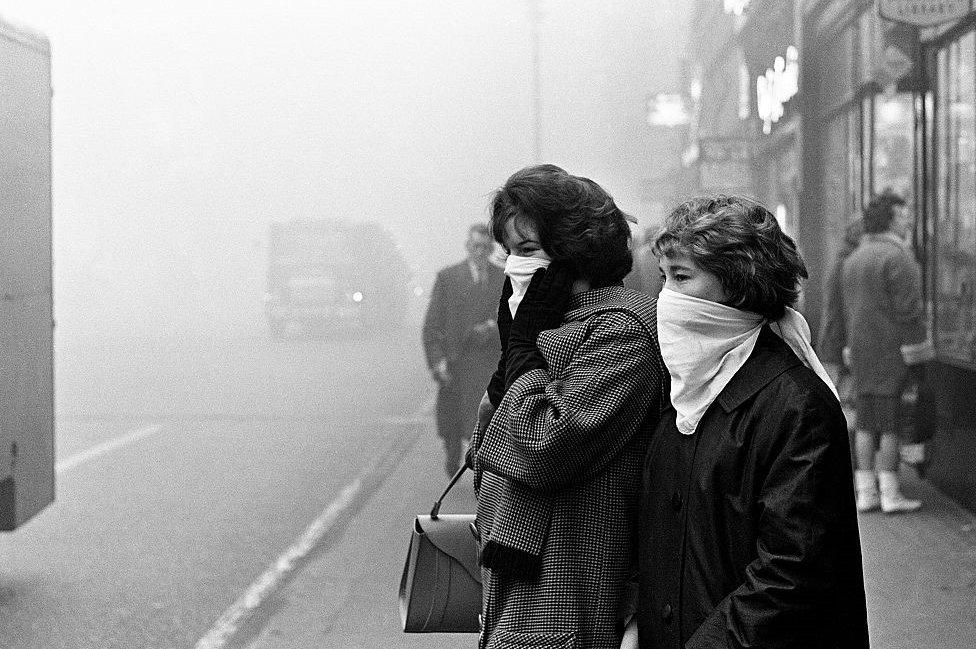
A smoggy London in December 1962
The Clean Air Acts of 1956 and 1968 outlawed emitting dark smoke from a chimney, set limits for emissions of grit and dust from furnaces, and provided a framework for control of the height and position of chimneys.
Air pollution, although no longer at pea-souper levels, remains a problem.
In December, Southwark Coroner's Court found it "made a material contribution" to the death of nine-year-old Ella Adoo-Kissi-Debrah, who lived near the South Circular Road in Lewisham and died in 2013, following an asthma attack.
Plague

Plague doctors before the bird-style mask was introduced
It was the Black Death - a plague that first swept Europe in the 14th Century, killing at least 25 million people between 1347 and 1351 - that presaged the advent of the medical mask.
Theorists believed the disease spread through poisoned air or "miasma", creating an imbalance in a person's bodily fluids. They tried to stop this foul air from reaching them by covering their faces or clutching sweet-smelling nosegays.
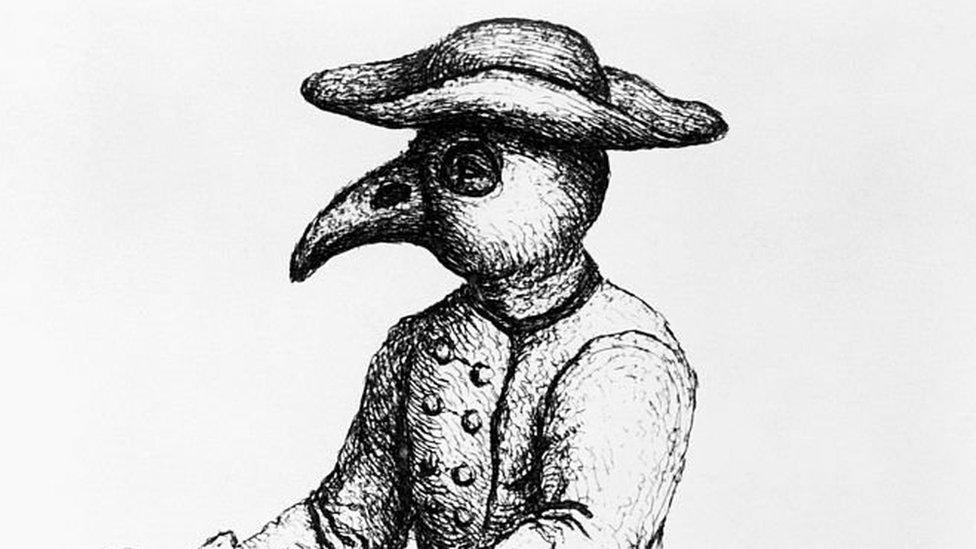
The beak-like part of the plague mask was stuffed with aromatic herbs in order to counteract harmful "miasmas"
The poster-boy for the plague, that sinister bird-mask-clad cross between the Shadow of Death and a steampunk crow, did not emerge until the last throes of the final outbreak, midway through the 17th Century.
Perfumes and spices were still involved - the "beak" originated as a place to stuff herbs and aromatics in order to counteract the so-called miasma.
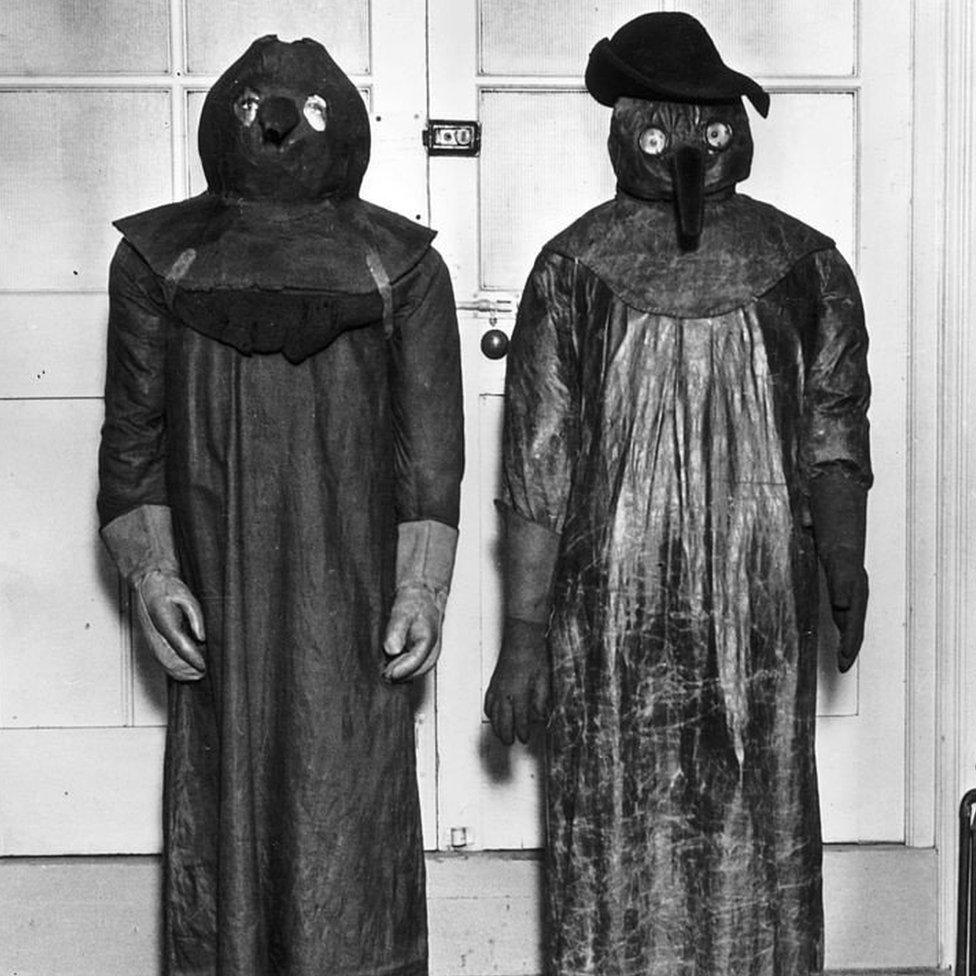
A reassuring sight for the unwell?
Heavy leather robes, thick glass eye-coverings, gloves and hats were all part of the protective clothing worn by doctors treating patients during the Great Plague of 1665.
Traffic
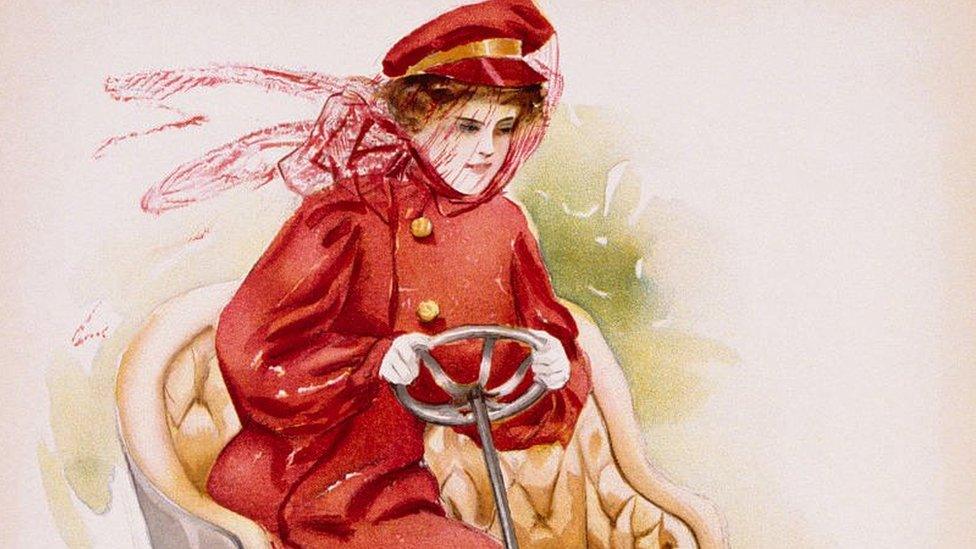
Driving veils - both alluring and practical
By the time we get to Victorian London, well-bred ladies - experts at covering their flesh and ever-keen to embrace anything that could be an intricate adornment that came in black - started to attach veils to their hats.
Although used during mourning, the veil's role was not exclusively funereal. It also helped to protect a woman's face from sun, rain and pollutants, as well as airborne dirt and dust.
According to Transport for London and Kings College London, external, the biggest cause of air pollution now is traffic. Exhaust emissions, including nitrogen oxides and tiny particles of rubber and metal, are pumped into the air.

Safety first! This 1971 motorist wears a gas mask but no seat belt
Flimsy veils, as used by lady drivers at the beginning of the 20th Century, no longer cut the mustard.
The sight of cyclists wearing anti-pollution masks was common long before coronavirus plunged everyone into the face covering pool. Motorists in masks that wouldn't seem out of place at a fetish club, less so.
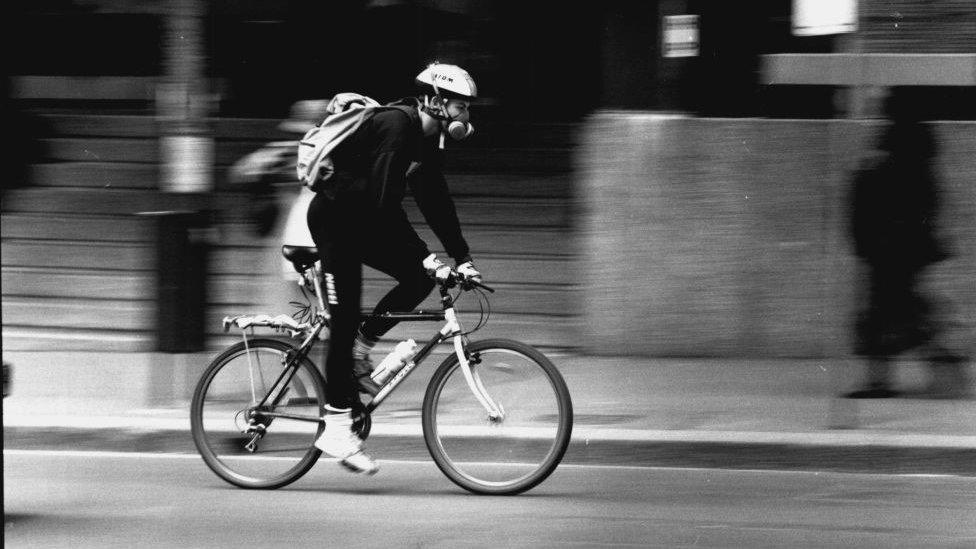
Bicycle couriers have long been aware of traffic pollution
Gas
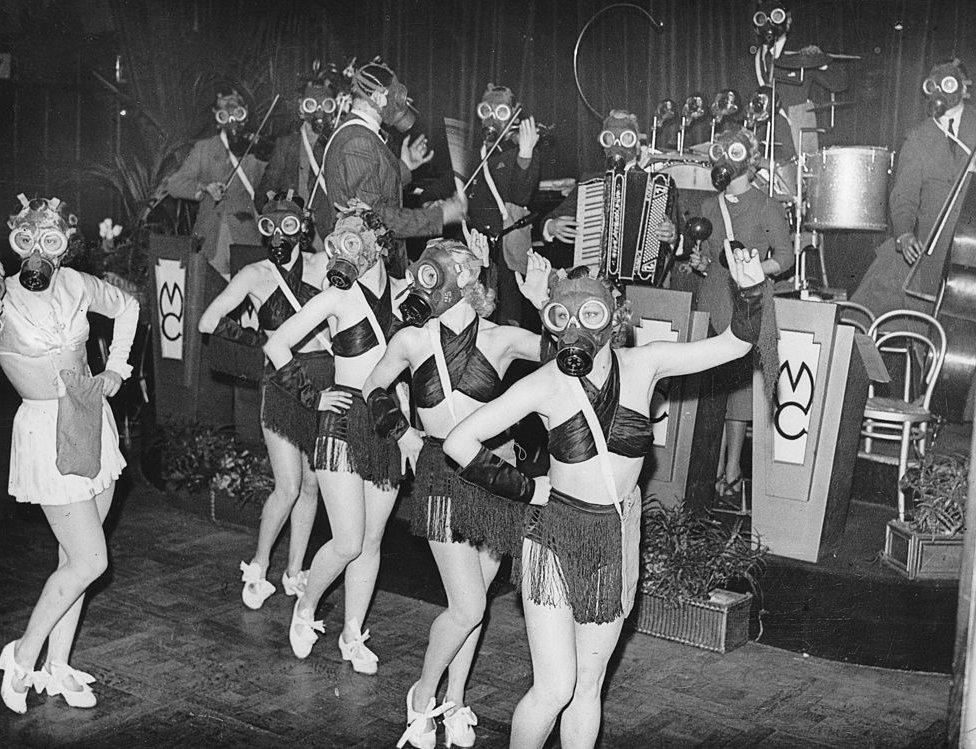
Dance numbers were unaffected but the choir wasn't thrilled
The threat of a second world war, 20 years after the Great War had seen the use of chlorine and mustard gas, triggered the government to issue gas masks to ordinary people as well as those in the military.
By 1938, 35 million General Civilian Respirators had been distributed and were a familiar sight in most areas of life - including adorning the dancing girls at Murray's Cabaret Club on Beak Street, Soho; and police cyclists who wore them as part of their personal protective equipment.
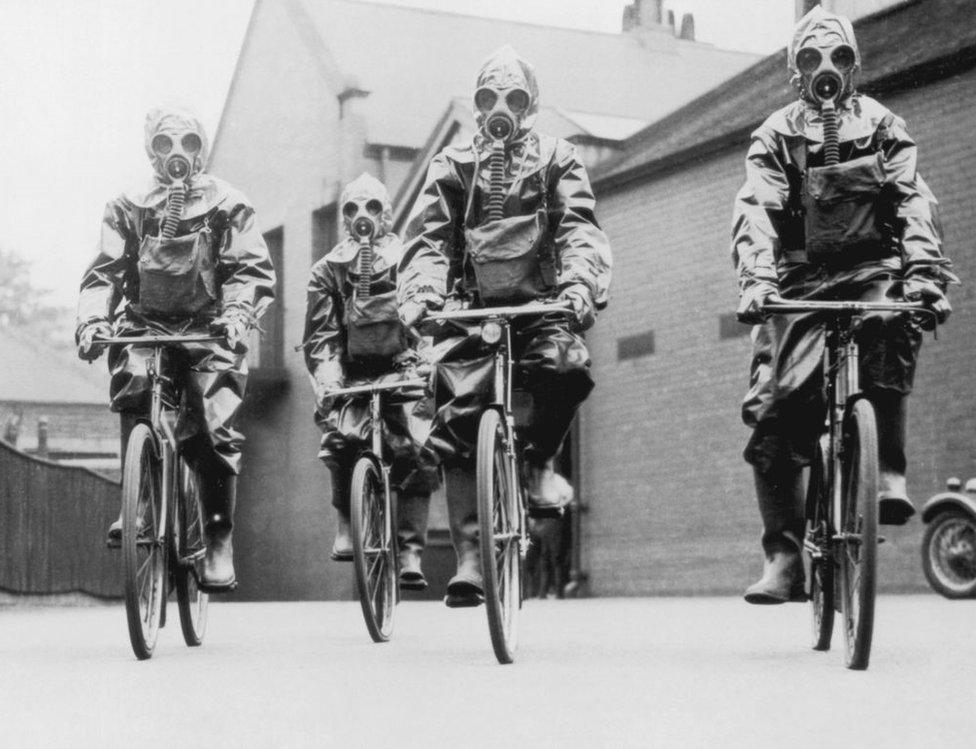
The police force's "friendly face" charm offensive hit a glitch
Even animals had their own masks - camels at Chessington Zoo were measured for bespoke fittings at the Air Raid Precautions Department in Surbiton, while horses were given more of a "one-size-fits-all" nosebag type of face covering.

"Just making sure her fringe is the right length"
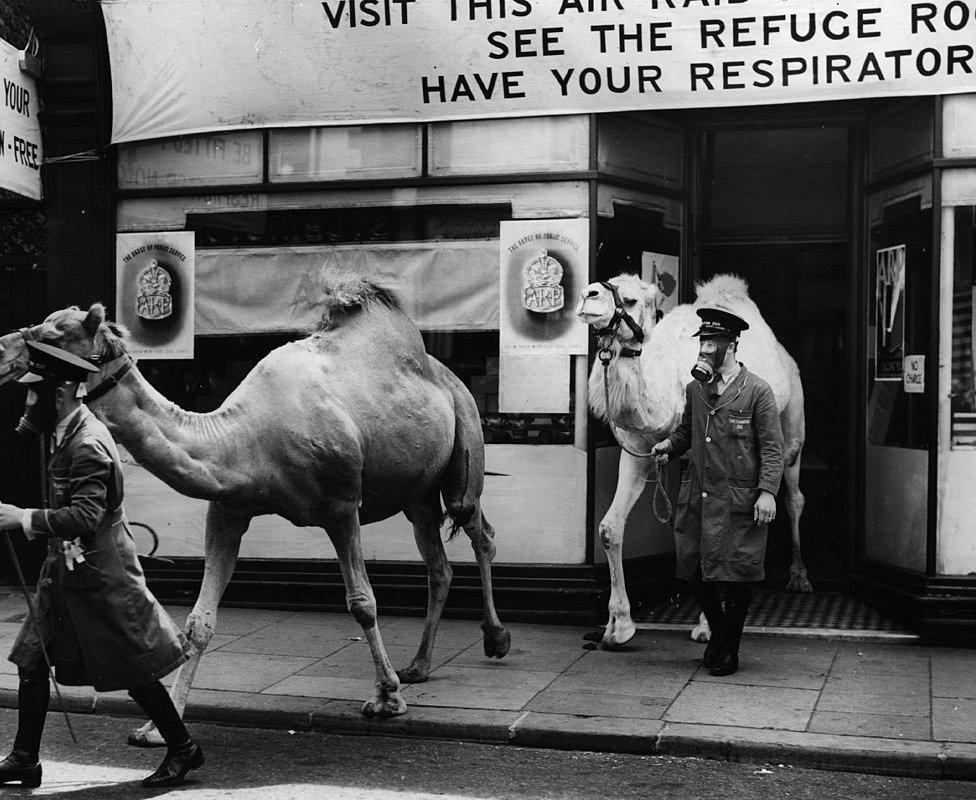
Getting the hump in Surbiton
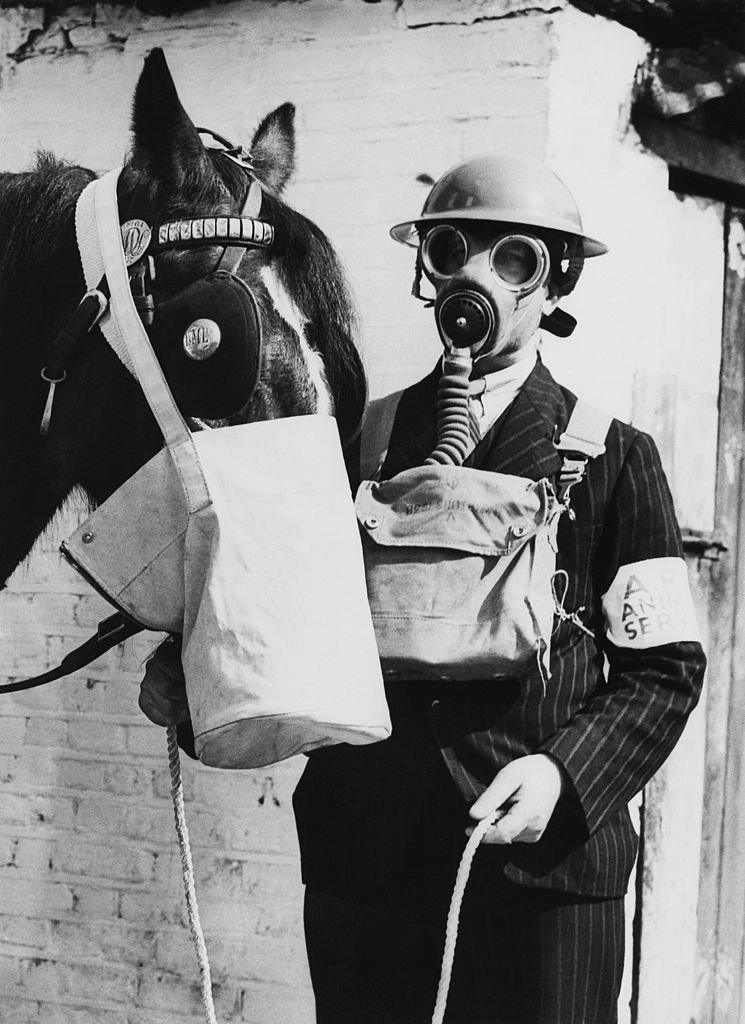
"Why the long face?"
Spanish flu
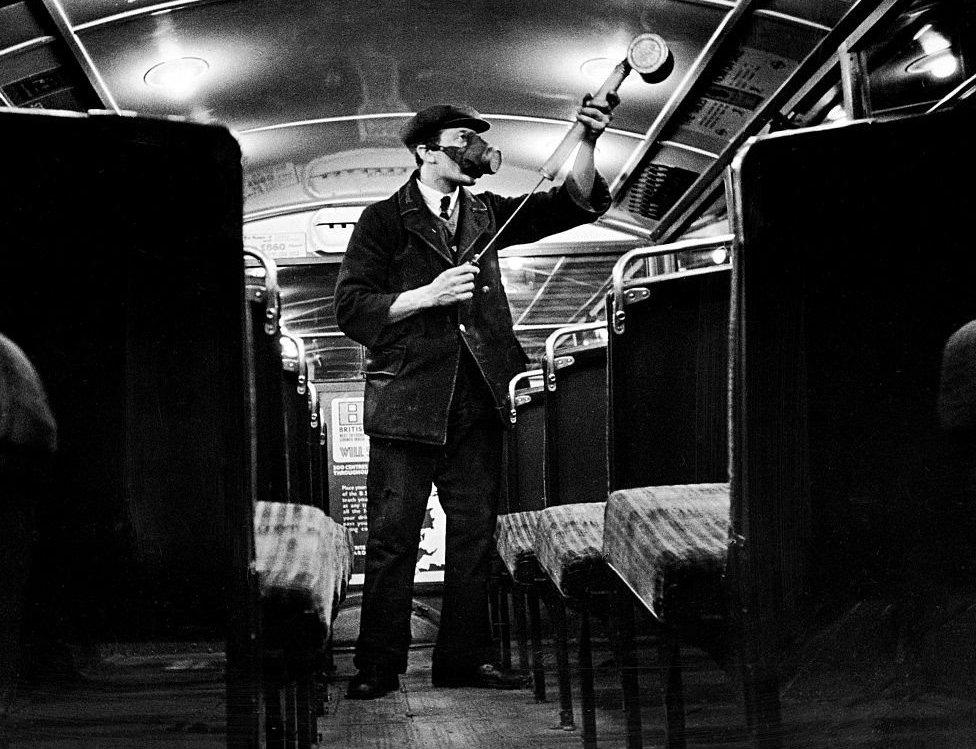
Efforts were made to thwart the spread of infection by spraying anti-flu solution over trains and buses
An outbreak of influenza at the end of World War One became a devastating global pandemic. Nicknamed the Spanish flu because Spain was the first country to report on the outbreak, about 50 million people died.
It is thought the spread of the virus was escalated by soldiers returning from the trenches in northern France.
Troops closely packed into train carriages and trucks ensured the highly contagious infection leapt from man to man.
It then spread from the railway stations to the centre of the cities, then to the suburbs and out into the countryside.
In the final weeks of World War One, Spanish flu was sweeping the globe
Companies, including the London General Omnibus Co, tried to stymie the spread of infection by spraying anti-flu solution over trains and buses and having its employees wear face coverings.
The Nursing Times in 1918 included advice for containing the disease, with a description of how the sisters at St Marylebone Infirmary in North Kensington erected disinfected partitions between each bed and "every nurse, doctor, ward-maid or char-woman" who entered the epidemic block had to wear a mask and overall.
Ordinary people were urged to "wear a mask and save your life" - many made their own from gauze, or added drops of disinfectant to under-nose contraptions.
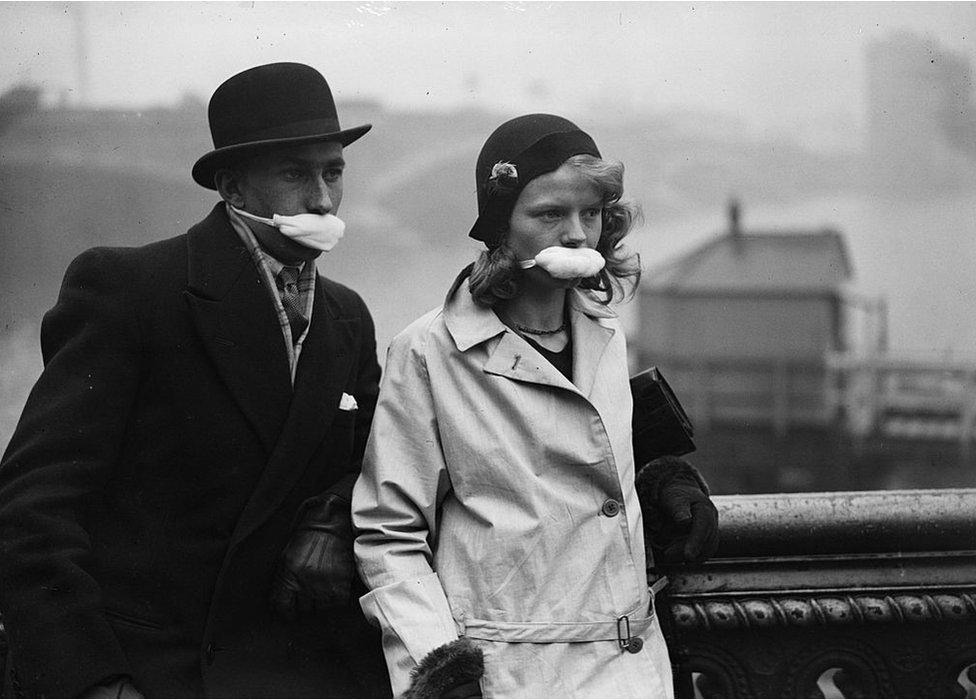
Some doctors suggested disinfectant-sprayed gauze might prevent against the deadly Spanish flu
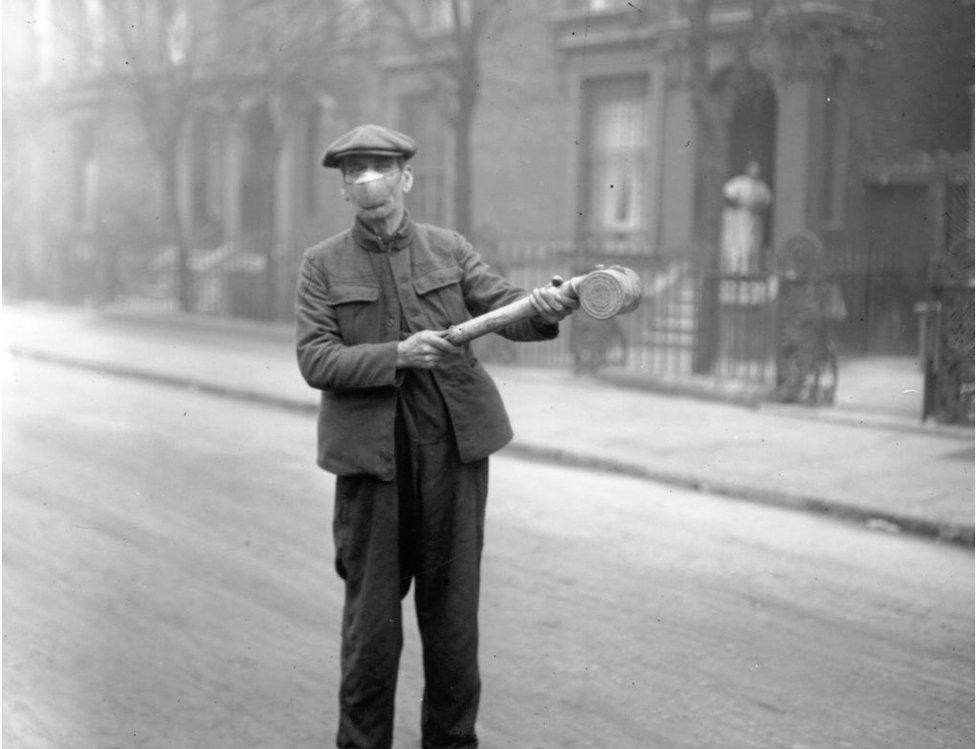
Anti-flu sprays and home-made facemasks were used on the streets of London
Fame
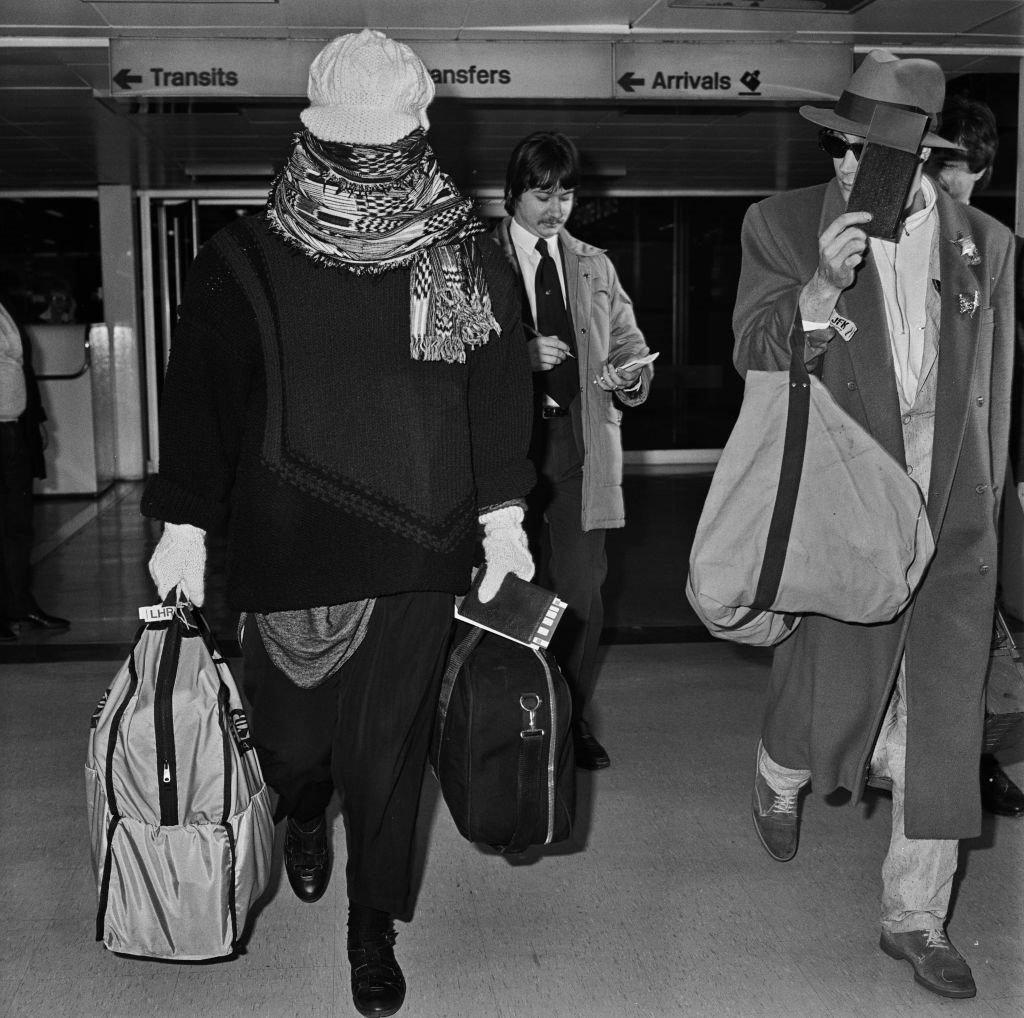
Boy George arrives at Heathrow airport in 1985, disguising himself with a scarf
Another type of mask has emerged in recent times - one that caters for the need to protects one's face from the coruscating gaze of avid fans (and presumably, foes).
These are perfect for celebrities who want to draw attention to themselves while retaining the plausible deniability of "I don't want to be recognised, that's why I'm wearing a noticeable mask".
It's yet to be established how they are coping with normal, non-famous people covering up their normal, non-famous faces, now that concealing one's face fails to earn even the briefest of curious glances.
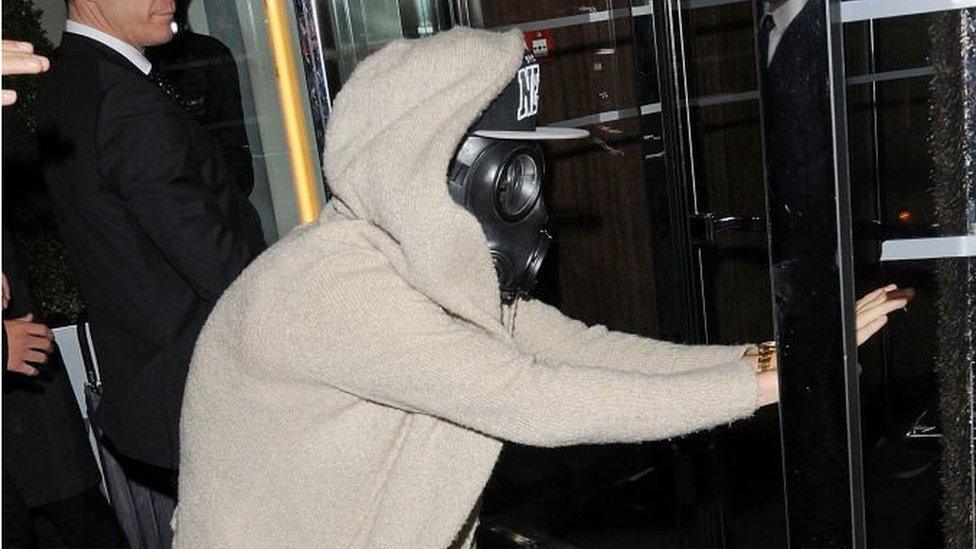
Justin Bieber going under the radar